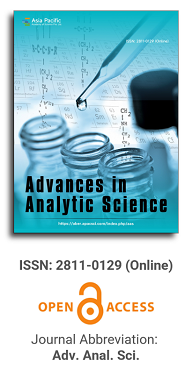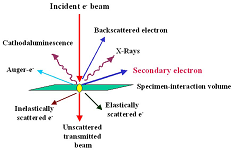
Asia Pacific Academy of Science Pte. Ltd. (APACSCI) specializes in international journal publishing. APACSCI adopts the open access publishing model and provides an important communication bridge for academic groups whose interest fields include engineering, technology, medicine, computer, mathematics, agriculture and forestry, and environment.

Assessment of the drinking water quality in the municipality of Vinto-Cochabamba-Bolivia
Vol 6, Issue 1, 2025
Download PDF
Abstract
Since coliform bacteria can raise the risk of infectious diseases in the most susceptible groups, their presence in water poses a possible concern to public health. When the physicochemical and microbiological quality of the water is uncertain, the situation becomes more complex. This study aims to assess the drinking water quality in three Territorial Base Organizations (TBOs) of the Municipality of Vinto-Cochabamba as well as the link between the TBOs and the microbiological parameters. According to Bolivian Standard 512 (NB 512), laboratory analyses of 30 samples collected from various residences (10 samples per TBO) demonstrate compliance with the upper limits of allowable values for physicochemical parameters (pH, conductivity, alkalinity, and hardness). The microbiological parameters were subjected to chi-square analysis, showing enough evidence to confirm with 95% confidence that the results of total and heat-resistant coliforms do not depend on the TBO (p = 0.36). By comparing the results of household water consumption with those of water supplied, it can be hypothesized that contamination of microbiological origin occurs either in the distribution pipes, household tanks, and/or the water use practices of each household. Of the 30 samples analyzed, only 11 met the maximum permissible limit for total coliforms, whereas 25 of the 30 samples met the maximum permissible limit for total coliforms.
Keywords
References
1. Gioda A. Brief history of water (Spanish). La Naturaleza y sus Recursos. 1999; 35(1): 42–48.
2. Reyes YC, Vergara I, Torres O, et al. Heavy metals contamination: Implications for health and food safety (Spanish). Revista Ingeniería, Investigación y Desarrollo. 2016; 16(2): 66–77.
3. Cossio Andia E, Choque Soto N. Prospective study of the microbiological quality of water consumed by the population of Fortaleza - Cochabamba (Spanish). Cimel. 2019; 24(1): 44–88.
4. Pérez JI, Nardini AG, Galindo AA. Comparative analysis of water quality indices applied to the Ranchería River, La Guajira-Colombia (Spanish). Informacion Tecnologica. 2018; 29(3): 47–58. doi: 10.4067/S0718-07642018000300047
5. Vildozo LH, Peredo Ramírez Y, Vargas Elío F. Preliminary diagnostic of bacteriologic water quality of human consumption and corrective measures priority assessment in the municipality of Poopó (Oruro, Bolivia) (Spanish). Acta Nova. 2020; 9(4): 483–503.
6. Ramos Parra Y, Pinilla Roncancio M. Water quality for human consumption in rural supply systems in Boyacá, Colombia. An infrastructural analysis (Spanish). Un Análisis Infraestructural. Revista EIA. 2020; 17(34): 219–233. doi: 10.24050/reia.v17i34.1378
7. Rodríguez SC, Asmundis CL, Ayala MT, Arzú OR. Presence of microbiological indicators in water for human consumption in San Cosme (Corrientes, Argentina) (Spanish). Revista Veterinaria. 2018; 29(1): 9–12. doi: 10.30972/vet.2912779
8. Pérez-López E. Quality control of drinking water in the western region of Costa Rica (Spanish). Revista Tecnología En Marcha. 2016; 29(3): 3–14. doi: 10.18845/tm.v29i3.2884
9. Ibnorca. NB 496:2016 Drinking water - Sampling, Second review (Spanish). Bolivia; 2016.
10. Ibnorca. NB 31001:2014 (Drinking water - Determination of pH (hydrogen potential) - Electrometric method), Second review (Spanish). Bolivia; 2014.
11. Ibnorca. NB 31011:2016 (Drinking water- Determination of conductivity) (Spanish). Bolivia; 2016.
12. Hanna Instruments. HI3811 Alkalinity Test Kit Instruction Manual (Spanish). Available online: https://cdn.hannacolombia.com/hannacdn/support/manual/2012/10/20140707112234-manual-hi-3811.pdf (accessed on 3 January 2025).
13. Hanna Instruments. Instruction Manual HI 3812 Hardness Tester (Spanish). Available online: https://cdn.hannacolombia.com/hannacdn/support/manual/2019/09/Manual_HI3812.pdf (accessed on 3 January 2025).
14. Ibnorca. NB 31006:2009 (Drinking water - Identification and enumeration of total coliform bacteria, heat-resistant coliforms, and escherichia coli - Most probable number method) (Spanish). Bolivia; 2009.
15. Ibnorca. NB 512:2016 (Drinking water - Requirements) (Spanish). Bolivia; 2016
16. Cobacho R, Arregui F, Cabrera E, Cabrera E Jr. Private water storage tanks: Evaluating their inefficiencies. Water Practice and Technology. 2008; 3(1): 1–8. doi: 10.2166/wpt.2008.025
17. Gómez Sellés E, Cabrera Marcet E, Soriano Olivares J, Balaguer Garrigos M. Sustainable Water Management and Use of Domestic Cisterns: An Incompatible Binomial (Spanish). In: Proceedings of the 4th Conference on Water Engineering; 20–23 October 2015; Córdoba, Spain. pp. 859–868.
18. Barreto Bogado A. Determination of the variability of water quality for human consumption. Case: Bº San Vicente of the city of Pilar (in Spanish). Ciencia Latina Revista Científica Multidisciplinar. 2022; 6(3): 3239–3250. doi: 10.37811/cl_rcm.v6i3.2458
19. Gwimbi P. The microbial quality of drinking water in Manonyane Community: Maseru District (Lesotho). African Health Sciences. 2011; 11(3): 474–480.
20. Choque Aguilar MR, Quispe Quisbert LA. Evaluation of the risk of contamination and the quality of water for human consumption in self-managed wells in the central district of the municipality of Vinto, Cochabamba - Bolivia (Spanish). Ciencia Latina Revista Científica Multidisciplinar. 2023; 7(4): 4966–4981. doi: 10.37811/cl_rcm.v7i4.7325
Supporting Agencies
Copyright (c) 2025 Author(s)
License URL: https://creativecommons.org/licenses/by/4.0/

This site is licensed under a Creative Commons Attribution 4.0 International License (CC BY 4.0).
1.jpg)
Prof. Sivanesan Subramanian
Anna University, India





.jpg)
